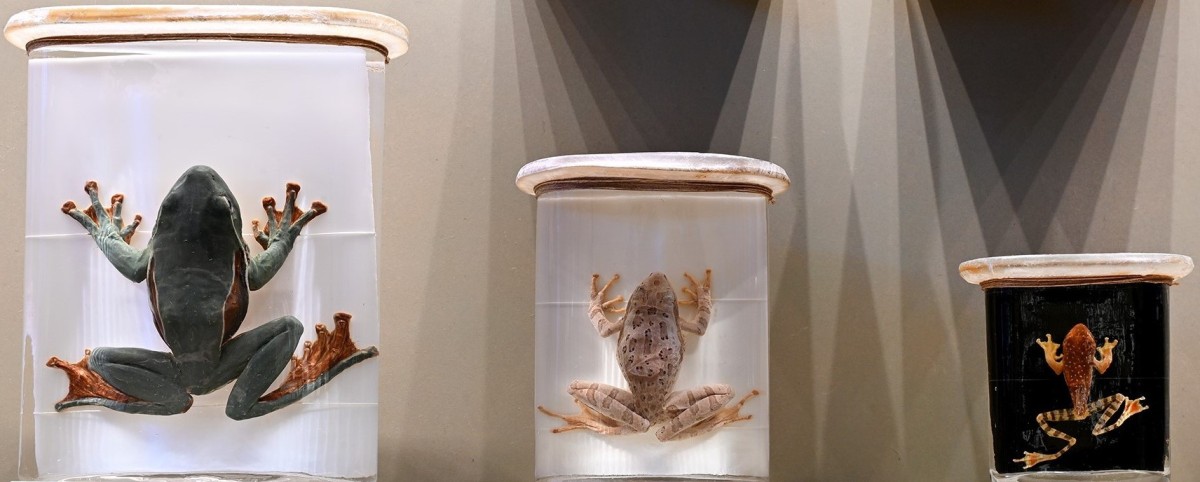Amphibians comprise three orders: Caecilians (over 200 species), caudata (including newts and salamanders - approximately
over 800 species), and anurans (including frogs and toads - over 7,500 species).
Reptiles are classified in four orders: Tuataras (one species), squamates (including lizards and snakes - over 11,500 species),
turtles (including sea turtles and tortoises - approximately 360 species), and crocodiles (crocodiles, alligators, caimans,
and gharials - 27 species).
Permanent Exhibition
The herpetological exhibition in hall 27 - 28 displays approximately 1,000 representative specimens. These include alcohol-preserved and dry specimens (e.g., skeletons, dermoplasts) and models, constituting roughly 0.5% of the entire scientific collection of over 200,000 objects.
Scientific collection
The scientific reference collection represents the basis for research and comprises about 220,000 specimens, with the majority
preserved in alcohol. Around 6,000 are dry specimens. The oldest items date back to 1800.
A digital collection management system provides metadata (scientific name, locality, collection date, collector, etc.), facilitating
research access. The type collection currently includes name-bearing types for approximately 210 amphibian and 570 reptile
taxa. These are documented in published catalogs.
The collection of type specimens is the core of the scientific collection and holds about 210 amphibian and 570 reptilian
taxa at the moment. Enumeration of the type specimens as well as of the dry specimens is published in the form of catalogues.
In addition to the collection database, the collection maintains a database on the distribution of Austrias herpetofauna.
The "Austrian Herpetofauna Database" It includes over 200,000 geo-referenced records with ecological metadata and is continuously
updated. Citizen science contributions are welcomed and encouraged.
The Herpetological Collection also houses a herpetological slide collection and a comprehensive technical library.
Research, Science and Institutional Role
Beyond curatorial responsibilities, the collection staff engage in national and international research collaborations. The
collection also serves as a hub for scientific communication, supporting students, professional researchers, and academic
institutions. As part of its outreach mission, it also supports and collaborates with the Austrian Society of Herpetology
(ÖGH).
Visits to the scientific collection are possible by prior written or telephone appointment.
Kontakt
Dr. Silke Schweiger
NHM Wien, 1. Zoologische Abteilung, Herpetologische Sammlung



